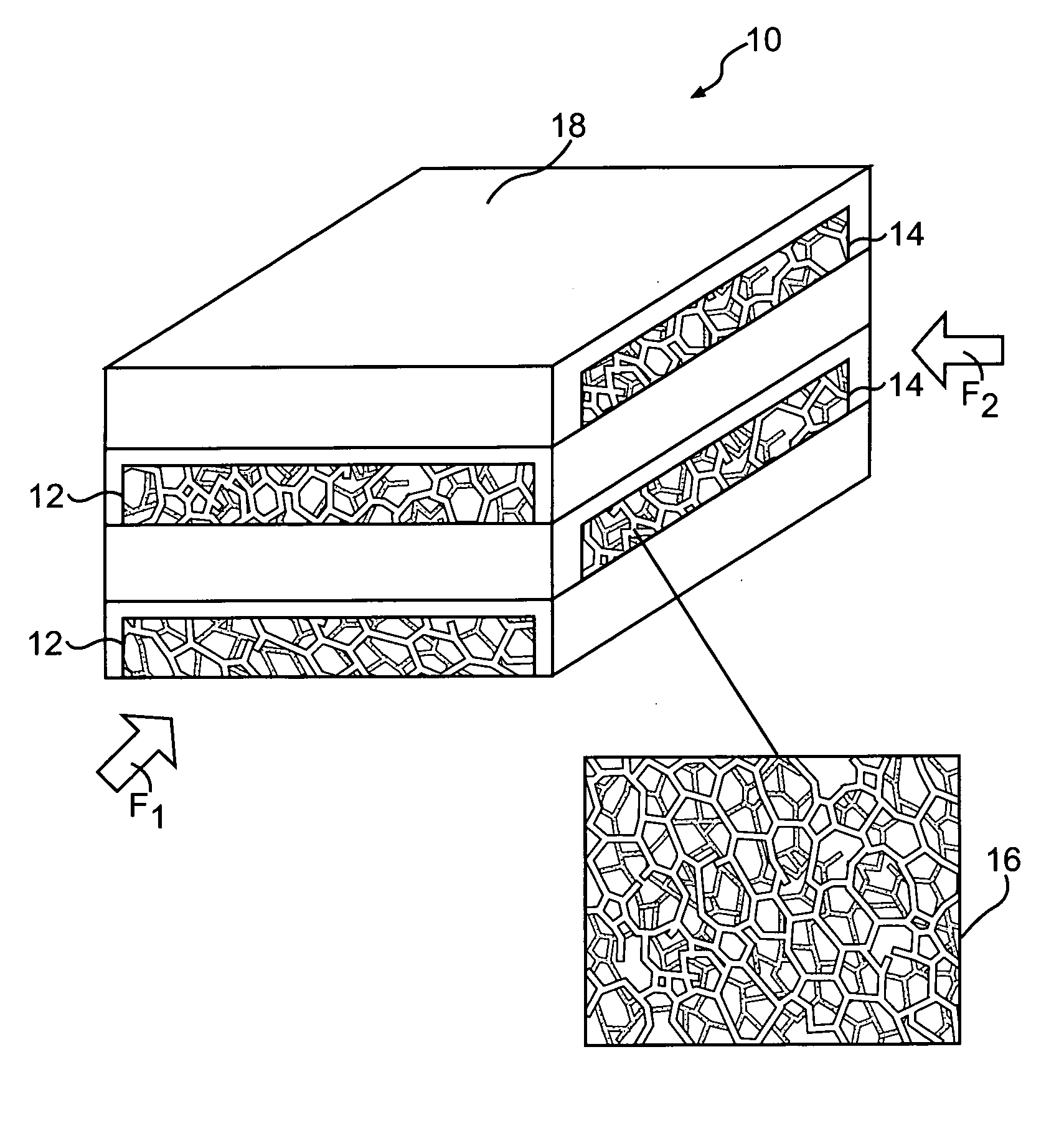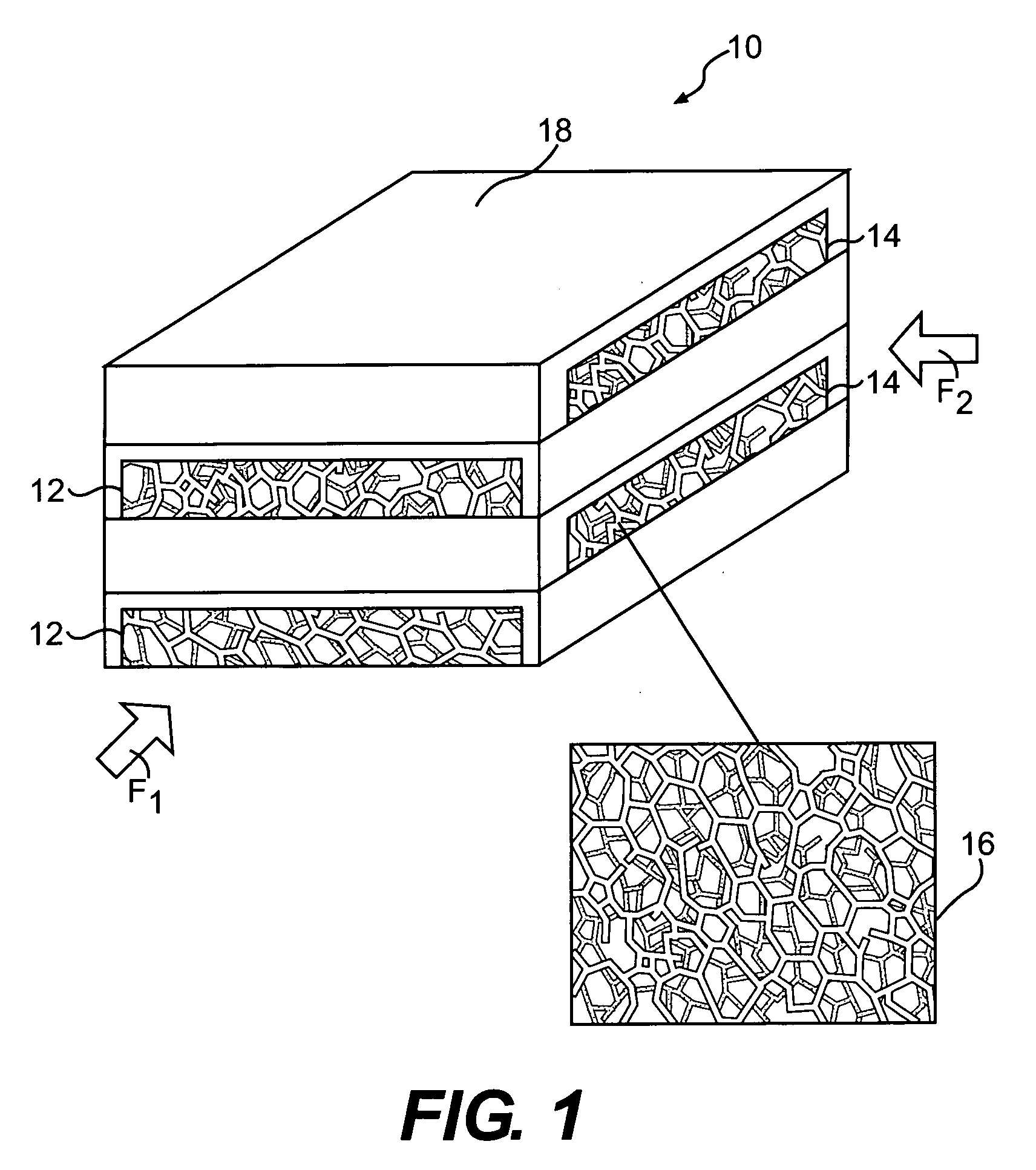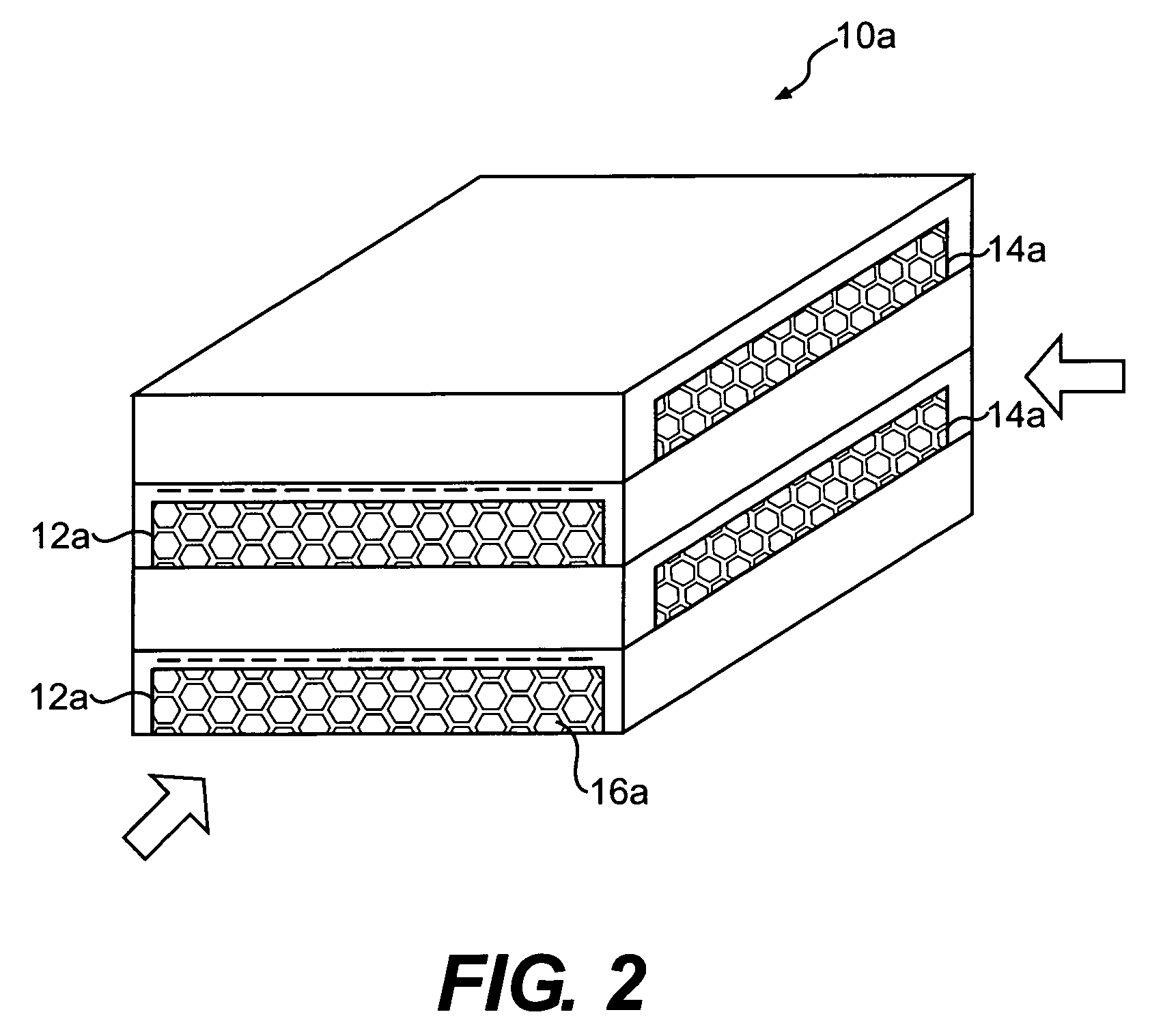Micro heat exchanger with thermally conductive porous network
a micro-heat exchanger and porous network technology, applied in the field of micro-heat exchangers, can solve the problems of limiting the implementation of such micro-heat exchangers to relatively expensive thermal control systems, relatively expensive and time-consuming conventional microfabrication techniques used to fabricate microchannels, etc., and achieves the effect of efficient and inexpensive manufactur
- Summary
- Abstract
- Description
- Claims
- Application Information
AI Technical Summary
Benefits of technology
Problems solved by technology
Method used
Image
Examples
Embodiment Construction
[0023]FIG. 1 illustrates a general perspective schematic view of a micro heat exchanger system 10. The term “micro heat exchanger system” as utilized herein is defined as a fluid-based thermal device where the surface area density ratio (ratio of surface area to volume) is 5,000 m2 / m3 or more. The microheat exchanger system 10 includes a first flow path 12 and a second flow path 14 transverse thereto for transferring thermal energy between a first fluid F1 flowing through the first flow path 12 and a second fluid F2 flowing through the second flow path 14. Although only two openings are illustrated for each of the first fluid F1 and the second fluid F2 in the disclosed embodiment, it should be understood that any number of paths will be usable with the present invention. That is, a sandwich structure of a multiple of interleaved serpentine paths as understood in a heat exchanger embodiment is a preferred flow path.
[0024] The first flow path 12 and the second flow path 14 are prefer...
PUM
| Property | Measurement | Unit |
|---|---|---|
| thick | aaaaa | aaaaa |
| thermal energy | aaaaa | aaaaa |
| thermally conductive | aaaaa | aaaaa |
Abstract
Description
Claims
Application Information
 Login to View More
Login to View More - R&D
- Intellectual Property
- Life Sciences
- Materials
- Tech Scout
- Unparalleled Data Quality
- Higher Quality Content
- 60% Fewer Hallucinations
Browse by: Latest US Patents, China's latest patents, Technical Efficacy Thesaurus, Application Domain, Technology Topic, Popular Technical Reports.
© 2025 PatSnap. All rights reserved.Legal|Privacy policy|Modern Slavery Act Transparency Statement|Sitemap|About US| Contact US: help@patsnap.com



